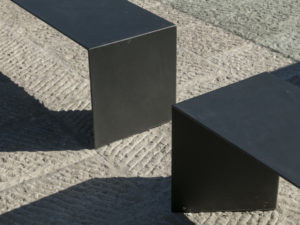Project Description
Considered for a time as Brazil’s largest cinema, Cine Theatro Brasil was built in 1932 at an important intersection in downtown Belo Horizonte. At the same time heavy and elegant, its art deco volume was one of the largest buildings in the city. It was followed in the 1950s by two other iconic constructions built at the same intersection: Banco Lavoura (Álvaro Vital Brazil, 1950) and Banco Mineiro (Oscar Niemeyer, 1953).
The building once played an important role on the city’s cinema and visual arts scene, and represented a benchmark in the planning development of the young capital. In 1936, it housed the first Modernist exhibition in Belo Horizonte, indicating its vocation for experimentation and life at the cutting edge. The rooms facing the corner streets have been put to several uses, from a popular restaurant to a barber shop – inaugurated by Juscelino Kubitschek – and traces of this history linger in its structural elements.
In a recent and awkward conversion of the cinema into a cultural centre, a huge ballroom was built on the old roof, which generated a great architectural void between the sloped ceiling of the audience seating and the slab of the new ballroom. Within this void, the original concrete trusses of the roof that once covered the original building have been preserved.
Structural Archeology sought to activate this unused space, layering the roof framework with a translucent screen, and turning the bleak void into an active venue. Articulated as an exercise in structural archeology, the proposal revisits and recalls the original 1932 architectural design, and recovers the stepped ceiling that once covered the theatre. Timber tableaux were installed over the supporting beams, creating the experience and the values of a liveable space that now works as an events venue.
































